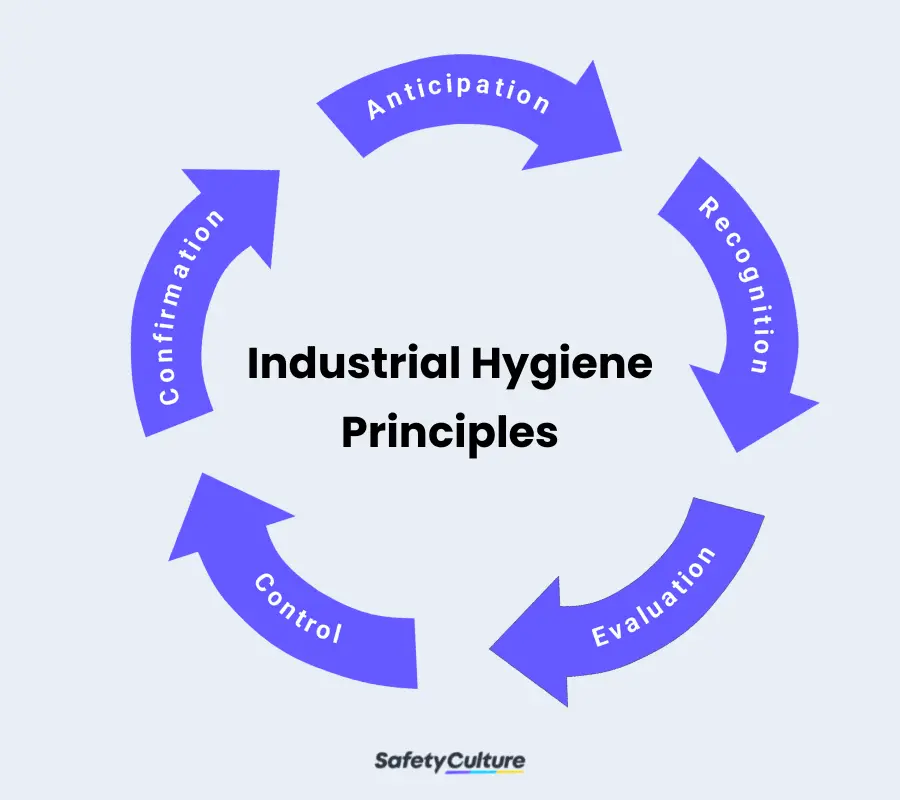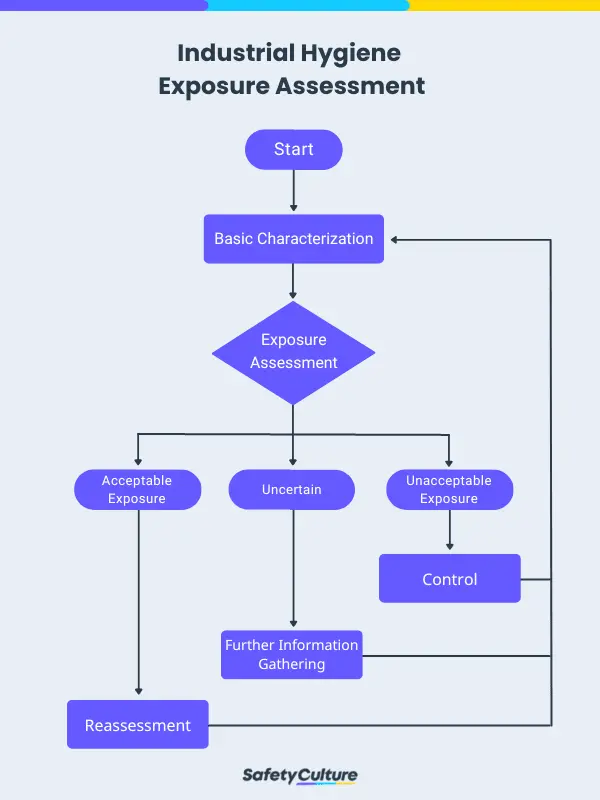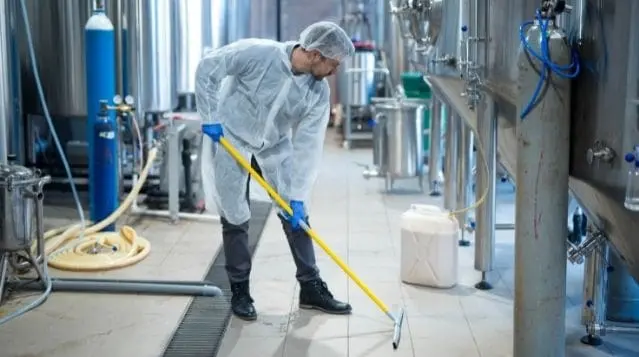What is Industrial Hygiene?
As defined by the Harvard School of Public Health, industrial hygiene deals with the process of identifying, evaluating, and controlling real or potential workplace environmental stressors or hazards that can impact the wellbeing of workers and community members. It’s also called Occupational Hygiene.
Importance
Industrial hygiene aims to focus on the safety of workers by implementing effective control of workplace hazards. This practice helps protect employees from various types of injuries and illnesses, such as nonfatal illnesses, respiratory conditions, skin diseases, poisoning, hearing loss, and repetitive stress injuries among others.
One common way of practicing industrial hygiene is by mandating the use of Personal Protective Equipment (PPE) to improve working conditions, provide respiratory protection, and prevent or eliminate workers’ exposure to hazards.
Occupational Health and Safety (OHS) vs Industrial Hygiene
Occupational Health and Safety (OHS) refers to the process of dealing with the effects of hazard exposure such as damage to human health, prescribing medicines for treatment and prevention, and conducting pre-employment, along with periodic, medical examinations. Ultimately, OHS aims to assess potential occupational diseases so that continuous healthcare assistance can be provided to workers.
On the other hand, industrial hygiene aims to reduce or remove work hazard exposure by implementing a series of controls and programs toward keeping the workplace clean, free from environmental stressors, and hygienic.
What are its Basic Principles?

Industrial hygienists perform risk assessments to anticipate health and safety concerns so that they can create and implement solutions and plans for prevention. Before conducting assessments, it’s a must to understand first the fundamentals of industrial hygiene. Here are its 5 principles:
1. Anticipation
This step entails a thorough documentation of the workplace design, operations, processes, specific work tasks, materials, and worker population. One notable example of anticipating industrial hygiene hazards is the use of Safety Data Sheets (SDS) as required under the Hazard Communication Standard (HCS) of the U.S. Occupational Safety and Health Administration (OSHA).
SDSs include important information on the properties of each chemical, the various hazards, protective measures, and safety precautions for proper handling, storing, and transporting of the chemical. Employers must ensure SDSs are readily available to all workers to serve as their guide on how to handle hazardous chemicals in the workplace.
This step also covers the importance of identifying any potential exposure issues caused by workplace hazards. In this phase, using a hazard identification checklist would be useful.
2. Recognition
Having a system of surveying each worker about how they get their work done is a key part of recognizing hazards. Employers must consider the layout of the workplace as employees working close to each other, also called simultaneous operations, can affect their hazard exposures.
3. Evaluation
This is where the exposure assessment comes in. Strictly done by qualified professionals such as industrial hygienists, the process involves evaluating the exposure risk and determining the who, what, where, when, and how, based on the work environment and industrial hygiene instruments necessary.
4. Control
According to OSHA, there are 3 main ways on how to reduce employee exposure to occupational hazards:
- Engineering controls – These aim to reduce or remove the hazard at its source or isolate the worker from the hazard itself. Such controls include confining work operations, installing general and local ventilation systems, eliminating toxic chemicals, and replacing them with non-toxic ones.
- Work practice controls – Such practices alter the way tasks are performed to mandate safe work practices and ask workers to follow the proper procedures to minimize exposures. Some examples include implementing workplace housekeeping practices and providing good supervision guidelines.
- Administrative controls – Setting production and task schedules is key to controlling employees’ hazard exposure. For instance, employers may schedule high-exposure productions during a period when only a few employees are present.
5. Confirmation
Once measures and controls have been established, the last step is to check the performance of what was implemented. Proactive confirmation also involves investigating issues, both present and potential, and employing corrective actions that complement your industrial hygiene program initiatives.
OSHA Standards
Under the OSH Act of 1970, some examples of OSHA standards involve requiring employers to:
- Prevent employees’ exposure to infectious diseases and harmful chemicals
- Ensure the safety of those working in confined spaces
- Provide fall protection, ample training for dangerous jobs, and safety equipment such as PPE
Now, what are the types of hazards defined by industrial hygiene?
- Environmental – Some examples of this type of hazard are aerosols, fibers, fumes, mists, gases, and vapors.
- Chemical – This type covers harmful chemical compounds in the form of solids, liquids, gases, mists, and dust, among others, that may cause toxic effects on employees’ health.
- Biological – This type of hazard is responsible for acute and chronic infections, caused by viruses, bacteria, and fungi entering the body.
- Physical – Excessive levels of heat exposure, noise, radiation, and vibration are also considered hazards in the workplace.
- Ergonomic – Certain conditions in the workplace caused by technological changes and poorly designed job tasks result in ergonomic hazards such as eye strain, repetitive motion, and heavy lifting problems.
Improve your EHS Management
Cultivate a safe working environment and streamline compliance with our EHS solutions.
Explore nowIndustrial Hygiene Exposure Assessment

Considered as a type of risk exposure assessment, a comprehensive industrial hygiene exposure assessment program is designed to gauge exposure profiles and then assess the acceptability of workplace exposure environmental agents.
This program is especially important in these situations:
- There’s a growing number of present and potential risks that can be managed by industrial hygiene programs
- Programs implemented in the past were lacking and now need a more efficient and well-documented process
As prescribed by the American Industrial Hygiene Association (AIHA), the basic steps of this systematic exposure assessment and control process include the following:
Exposure characterization
Make sure to gather the necessary details to characterize the project site or facility, process, operations, workforce, and environmental agents. For this step, it’s highly crucial to conduct documentation that is well-organized. In most cases, this characterization is done as part of the job safety analysis, which is also known as the job hazard analysis.
Exposure assessment
Conducting qualitative exposure assessments paves the way to screening exposure risks and letting employers set priorities on the type of program to be implemented.
This process also defines the groups of similarly-exposed workers through the Similar Exposure Groups (SEGs). After this, their exposure profiles will be described, and judgments on these profiles will depend on the: (1) estimated exposure level, (2) gravity of health effects, and (3) level of certainty associated with the available data.
Further, industrial hygiene risks may be classified as:
- Unacceptable – This requires implementing engineering and/or administrative controls. Additionally, strictly mandating the use of PPE until controls are effectively carried out is recommended.
- Acceptable – Even if there’s no action required, routine monitoring may be necessary for judgment validation purposes. Doing this is also a key step in ensuring that exposures remain acceptable.
- Uncertain – This means that there’s a need to acquire additional information to determine the acceptability of the exposure.
Further information gathering
Mainly applied for uncertain exposure judgments, collecting supporting information on health effects helps in resolving such uncertainties with increased confidence. Hence, exposure monitoring can also be conducted as needed.
Hazard controls implementation
Once priority measures have been confirmed, establish strategies most especially for unacceptable and uncertain exposures. While organizations should ensure that this step doesn’t necessarily happen often, having principles and programs in place is important to take the proper precautions or steps to protect worker health.
Reassessment
As part of an employer’s responsibility to promote a culture of safety and quality, conducting thorough periodic reviews of exposures is a must. This is where identifying the frequency of routine monitoring comes in, and whether certain exposures remain acceptable and tolerable. Continuous monitoring is highly recommended, most especially if changes in processes or operations happen regularly.
Communication and documentation
Make sure to fully document SEGs, the workers’ exposure profiles, exposure judgments, monitoring results, and hazard control measures. Further, be transparent to your employees about the results of exposure assessments. Occupational health managers may use these data to gauge whether recommended practices are being followed and monitored well, and help gauge the accuracy and integrity of the results.
Digitize the way you Work
Empower your team with SafetyCulture to perform checks, train staff, report issues, and automate tasks with our digital platform.
Get Started for FreeTraining
Getting everyone on board with organizational initiatives toward industrial hygiene starts with training the workers involved.
Through a powerful mobile Learning Management System (LMS) like SafetyCulture (formerly iAuditor)’s Training, you can conduct training on industrial hygiene and make it easier and more efficient for your organization to deliver engaging and effective learning to your team. In fact, you can use this free and editable Industrial Hygiene course to make it more aligned with your objectives.
You may also choose to integrate key information that you may find in the OSHA Industrial Hygiene Training guide to enrich your course.
Using SafetyCulture (formerly iAuditor) for IH Practices
Maximize the power of technology in monitoring and ensuring your organization complies with industrial hygiene standards and workplace safety. One way to do so is by utilizing digital checklists.
Having digital checklists lets you keep track of the regulations you need to comply with, making it easier for you and your employees to stay updated and view everything in one place. SafetyCulture is a mobile-first checklist inspection app that empowers employers, managers, and employees on the frontlines to maintain quality and safety in the workplace.
Apart from downloading industrial hygiene monitoring templates, you can also take advantage of SafetyCulture’s features to do the following:
- conduct and schedule inspections to ensure your organization’s compliance with IH standards;
- pinpoint issues from the inspections conducted and assign actions or follow-ups to get tasks done;
- communicate with your team members and build logical workflows so everyone has better visibility of the deliverables;
- implement a scoring system in your inspections and access your analytics dashboard for constant compliance monitoring;
- get access to rich insights and data that you can use to further streamline your efforts in maintaining and implementing industrial hygiene programs; and
- easily store all checklists, inspections, and reports in the app’s secure cloud database.




